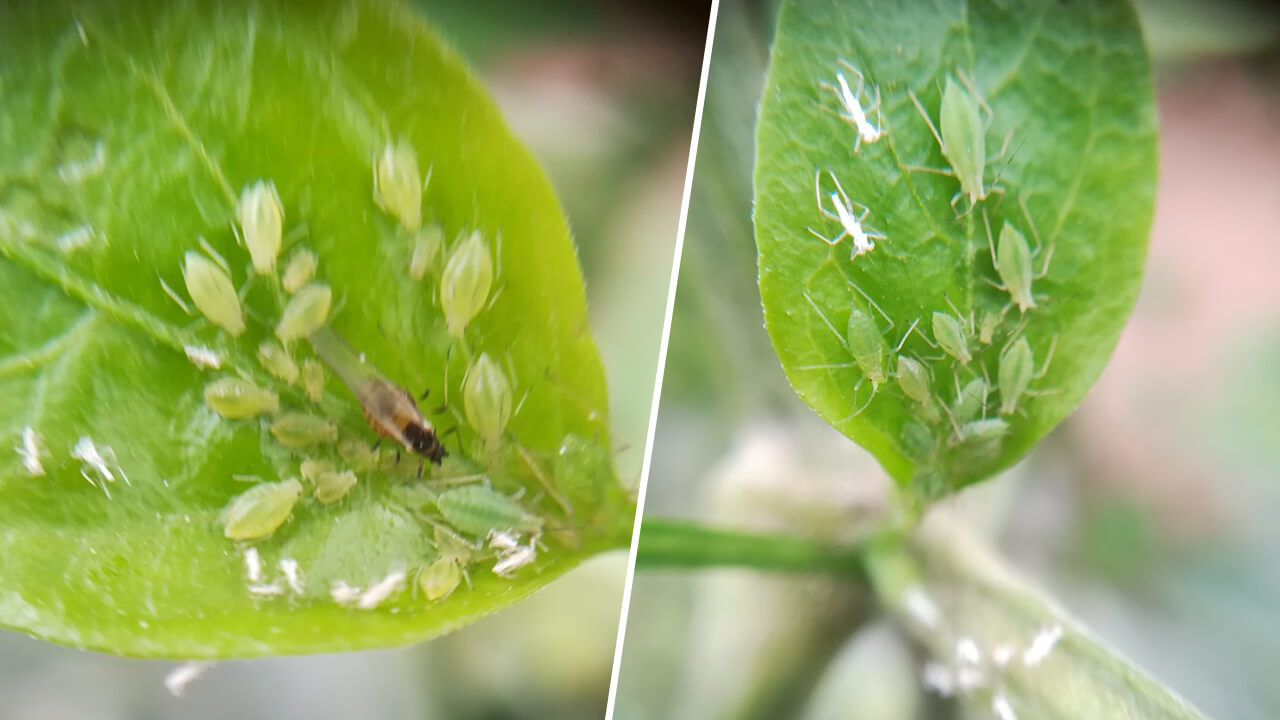Aphid control in pepper: from observation to action

Aphid on vegetative cover in detail.
Aphid control in pepper is essential, both in the greenhouse and outdoors. The aphid is one of the most common pests in horticultural crops, with serious consequences for the fruit, not only in terms of loss of commercial value, but also because it opens the door to numerous infections and viruses.
It is a small insect, winged or wingless, which has the ability to reproduce very quickly and has a life cycle of between 7 and 25-28 days, depending on the temperature. Heat and dry air are ideal conditions that speed up reproduction.
Aphids on pepper are relatively easy to detect by a simple visual inspection of the underside of the leaf, the veins or the buds of the plant. Mainly green or black in colour, the most common species found on pepper crops are Myzus persicae, Aphis gossiipy, Macrosiphum euphorbiae or Aulacorthum solani.
As with its detection, the damage caused by aphid infestation on pepper is also easy to see. The aphid is a sucking insect that sticks its stylet into the plant to feed. Absorption of the sap causes a general weakening of the plant, affecting its development of the plant and causing deformation or curling of the leaves.
In addition, the cuts and wounds caused by aphids open the door to viruses and infections, and the honeydew they leave behind penetrates the leaves, interfering with the photosynthetic process and attracting other insects. In practice, this means damaged leaves, smaller fruit and less productive crops. In severe cases, the plant may die.
Insecticides against aphids
Aphid control in pepper starts with regular and continuous monitoring of the plant for aphids. Once the pest is present, the most effective way to control and eradicate it is through phytosanitary treatments.
In greenhouses in south-eastern Spain, mainly in Almeria and Murcia, biological control strategies are used, combining the release of predators with corrective treatments based on the bioinsecticide Pirecris.
Pirecris is a natural insecticide with a powerful shock effect that quickly and safely controls insect populations. It is an approved product for organic farming and is compatible with beneficial fauna within certain parameters and a biological control strategy: first Pirecris is applied to reduce the incidence of the pest, and 24 hours later the natural enemies of the aphid are released to settle in and do their job.
If the infestation is very severe, two applications can be made within 48 hours, with natural enemy control introduced after 24 hours have elapsed.
Powerful insecticidal action
The key to the effectiveness of Pirecris against pepper aphids lies in its exclusive formulation, thanks to the perfect balance between the PI and PII molecules that make up the active ingredient, providing maximum insecticidal efficacy with a lower dose of active ingredient.
The micro-molecules that make up the formulation condense and form a stable and balanced network throughout the solution, providing perfect coverage on the leaf and the insect. Pirecris has a strong insecticidal effect that works by blocking the insect’s respiratory system, causing its death. The product acts on the eggs and larvae, resulting in a very significant reduction in the number of new generations.
Another advantage of Pirecris for aphid control in pepper is its short safety period (1 day), which allows us to carry out treatments very close to harvest.
Cultural measures
In addition to treatments, there are a number of cultural practices that are highly recommended for the prevention and control of pepper aphids. Regular monitoring and observation is much more effective if we add the use of coloured sticky traps to catch winged individuals.
The use of netting in the greenhouse can also be very helpful in preventing insect entry, as can the installation of external hedges and banker plants in the greenhouse to accommodate the natural predators of aphids throughout the aphid life cycle.

